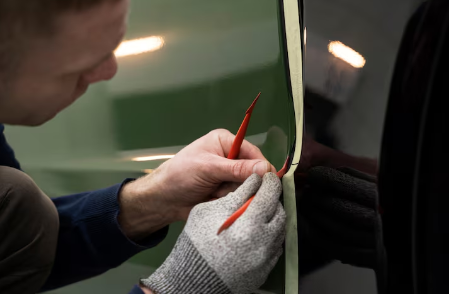What is UVLACK? High-Performance UV Coating for Durability & Shine

In an era where surface finishes must not only look good but also perform under pressure, UVLACK emerges as a standout technology in the field of ultraviolet-curing coatings. Whether you are a manufacturer seeking faster production times and stronger finishes, a designer aiming for high gloss and durability, or a craftsman working with precious materials, UVLACK offers a combination of aesthetic appeal and long-term performance. This article delves into what UVLACK is, how it works, why it stands out from traditional coatings, the industries using it, how you can apply it, and the benefits and considerations you should know. By the end, you’ll understand why UVLACK isn’t just a nice finish—it’s a smart investment in longevity, quality and future-proofing your surfaces.
What is UVLACK and How It Works
UVLACK refers to a high-performance coating system that cures—or hardens—when exposed to ultraviolet (UV) light. Unlike traditional solvent-based or water-based coatings that rely on evaporation or heat curing, UVLACK utilizes special photoinitiators and resins that react almost instantly to UV exposure, forming a durable, tightly cross-linked film. False Art+2Awomoscow.com+2 This rapid curing not only speeds up production but also results in finishes with superior hardness, chemical-resistance, scratch-resistance, and excellent gloss or matte control. The surface you get isn’t just visually appealing—it’s engineered for endurance. From wood, metal and plastic to electronics and packaging, UVLACK bonds strongly to diverse substrates thanks to its advanced formulations. Awomoscow.com+1
Why UVLACK Stands Out from Traditional Coatings
When you compare UVLACK with conventional coatings, several key advantages become evident. Firstly, the curing time is drastically reduced: what may take hours or days with traditional systems can sometimes be achieved in seconds under UV light. This leads to significant time savings and increased throughput. Wikipedia+1 Secondly, the finished coating is often stronger: better resistance against scratching, chemicals and UV degradation—meaning your surface retains color, sheen and integrity longer. For example, in printing, wood finishing and automotive uses, these durability gains are especially valued. Voices Together+1 Thirdly, there are sustainability benefits: fewer solvents, lower volatile organic compound (VOC) emissions, and minimal waste due to rapid curing. Industries increasingly adopt UVLACK not just for performance but for environmental responsibility. Awomoscow.com In short, UVLACK isn’t just an alternative—it often serves as the next generation in surface finishing.
Key Applications and Industry Use Cases
One of the strengths of UVLACK is its versatility across industries. In the automotive sector, for instance, dashboards, trims and exterior parts coated with UVLACK show enhanced gloss, resistance to UV-fading, and durability under wear. False Art Furniture and interior design benefit too: wood surfaces, cabinetry, tabletops and more gain both visual depth and practical resilience, which is especially valuable in high-traffic homes or commercial settings. Awomoscow.com+1 In electronics and consumer goods manufacturing, UVLACK coatings protect delicate components from moisture, dust, abrasion and UV radiation—all while enabling sleek finishes on plastics and metal parts. Voices Together Even packaging and printed materials leverage UVLACK for high-gloss, scratch-resistant finishes that elevate branding and durability. This wide range of uses underscores why UVLACK is not niche—it is mainstream in high-performance finishing.
How to Apply UVLACK: Best Practices
To get the most from UVLACK, correct application matters. First, surface preparation is critical: the substrate needs to be clean, dry, free of oils or contaminants. Without this, curing may not adhere properly or the finish may fail prematurely. Second, the coating needs to be applied in accordance with manufacturer guidelines—often with thin, even layers, avoiding excessive buildup which can impair curing or cause defects. Then, exposure to the correct UV wavelength and intensity is required—adequate UV equipment must be used, sometimes with conveyor systems or curing stations. Post-curing inspection is also important: checking adhesion, gloss level, thickness and uniformity. Many suppliers provide technical sheets and “recipes” for specific substrates (metal, plastic, wood) and usage contexts. Taking these steps ensures UVLACK delivers on its promise of durability, shine and consistency.
Benefits, Considerations & Choosing UVLACK
There are compelling benefits to choosing UVLACK: increased lifespan of coatings, improved appearance, faster production, lower emissions, and wide substrate compatibility. However, adopting it also involves considerations: initial investment in UV-curing equipment may be higher than traditional systems; some surfaces or geometries may challenge curing (shadows, complex shapes); training and process controls are required to avoid application defects. Additionally, while many substrates work well, it’s vital to ensure that the chosen UVLACK variant is compatible with your specific material and end use. Overall, companies or professionals adopting UVLACK often find that the long-term gains—lower maintenance, fewer recoats, higher quality—outweigh the upfront cost.
Conclusion
In today’s competitive landscape of surface finishes, UVLACK distinguishes itself as more than just a coating—it’s a performance solution. Its ability to combine rapid UV curing, strong substrate adhesion, stunning finishes and environmental benefits make it a smart choice for manufacturers, designers and craftsmen alike. Whether you’re protecting furniture, automotive components, electronics or packaging, UVLACK gives surfaces a future-proof edge. If you want lasting quality, efficiency and aesthetic excellence, adopting UVLACK could be one of the best decisions for your finishing process.
❓ Frequently Asked Questions (FAQ)
Q1: What exactly is UVLACK?
A: UVLACK is a high-performance ultraviolet-cured coating system designed to create durable, glossy or hard-finish surfaces across different materials by reacting under UV light. Voices Together+1
Q2: What makes UVLACK different from traditional coatings?
A: Unlike conventional coatings that rely on solvent evaporation or heat, UVLACK cures quickly under ultraviolet light, resulting in faster production, higher durability, better scratch/chemical resistance and reduced emissions. Awomoscow.com+1
Q3: What industries use UVLACK?
A: It is used widely across automotive (interiors/exteriors), furniture/wood finishing, electronics/consumer goods, packaging and printed materials due to its strong performance and aesthetic appeal. Voices Together+1
Q4: What are the application considerations for UVLACK?
A: Proper surface preparation, correct equipment (UV curing light), thin even coating, substrate compatibility and adequate inspection are key to achieving optimal results. Some geometries or shadows may impact curing quality.
Q5: Is UVLACK environmentally friendly?
A: Yes, many formulations of UVLACK produce lower volatile organic compound (VOC) emissions, cure rapidly (reducing energy usage) and contribute to longer-lasting finishes, which align with sustainable production practices.

